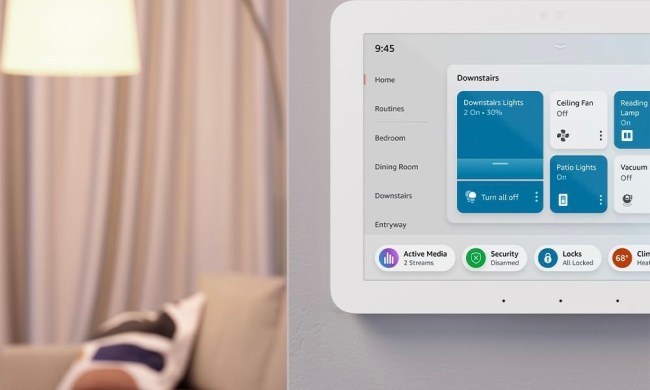You’ve maybe seen the “Thread” brand on the occasional smart home appliance, like the last Apple HomePod Mini. Understanding what exactly Thread entails and what it can do for your set-up can shape how the rest of your smart home grows.
Thread is a wireless communication standard in the same vein as Zigbee, which is used by Philips Hue lights. The biggest thing that sets Thread apart is that you don’t need a separate hardware hub to tie devices together. Thread was originally founded in 2014 by ARM, Qualcomm, NXP, Nest, Samsung, and a smattering of other manufacturers. In 2018, Apple joined the party.
Here’s a deep dive on how it all works and everything else you need to know about the Thread smart home.
How does Thread work?
Thread creates a mesh network throughout a home between all compatible smart devices. One of these devices needs to be a border router, which connects to your home Wi-Fi network. All other devices on the Thread network can then send or receive data to the internet and the rest of your local network via these border routers. The border routers effectively bundle the “hub” function you see in other smart home protocols within one of the existing devices, rather than needing another dedicated device altogether.

The mesh nature of the Thread network provides loads of redundancy. If a device comes onto or leaves the network, there are additional points of entry through which that data can cross the network. The protocol also helps with range. Since it’s not necessary for all devices to connect to a single hub, you can stretch devices out as long as they’re within jumping distance to at least one other Thread device.
The Thread protocol is based on IPv6, which gives it plenty of runway into the future, not to mention broad interoperability, A major bonus of this common language is its rather speedy response times.
What is a Thread device?
A Thread device is able to connect with other Thread devices in the home, provided there is a border router device present. These devices span a wide range of smart home categories, such as lighting, smart plugs, and smart thermostats. You can see the full list of certified Thread products here.
Over the course of operation, each device on a Thread network, called a node, will shift roles as either an endpoint or a router. A router will actively relay data from one node to the next. Endpoints are typically low-power, battery-operated devices. They have enough juice to send and receive data to do their thing, but not enough to act as a relay for other devices on the network. Routers can also shift to endpoint roles if they aren’t needed for any heavy lifting. Leader nodes will make the call on how to promote or demote other nodes on the network to these roles.
While the Apple HomePod Mini tends to get a lot of attention as the border router of choice, the latest Eero devices are also Thread border routers — and sensible picks, considering they’re already part of a mesh Wi-Fi network.
Does Thread replace Bluetooth?
No, there will likely always be room for Bluetooth in a wide range of uses. Thread actually leverages Bluetooth in its latest specification as a way of communicating with your phone in case the border router connection doesn’t work. Bluetooth can be used for a lot of set-up and configuration of Thread networks as well.
What’s the difference between Thread and Matter?
Matter is another protocol that is often heard in the same conversations as Thread. Matter is an application layer for smart homes that can live on top of Thread as a communication standard. Like Thread, Matter will allow devices from a wide range of manufacturers to talk to one another.
Hopefully, that clears up what Thread devices are about and what they can bring to your smart home. Regardless of how the whole thing works, the promise of faster response times and ditching the need for a separate hardware hub is quite appealing. If you’re just starting out on building your smart home, consider baking in Thread from the get-go.


